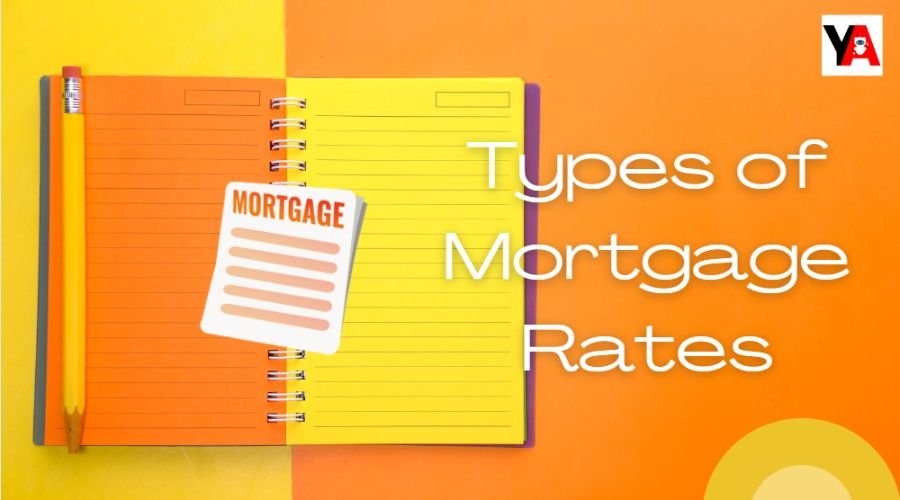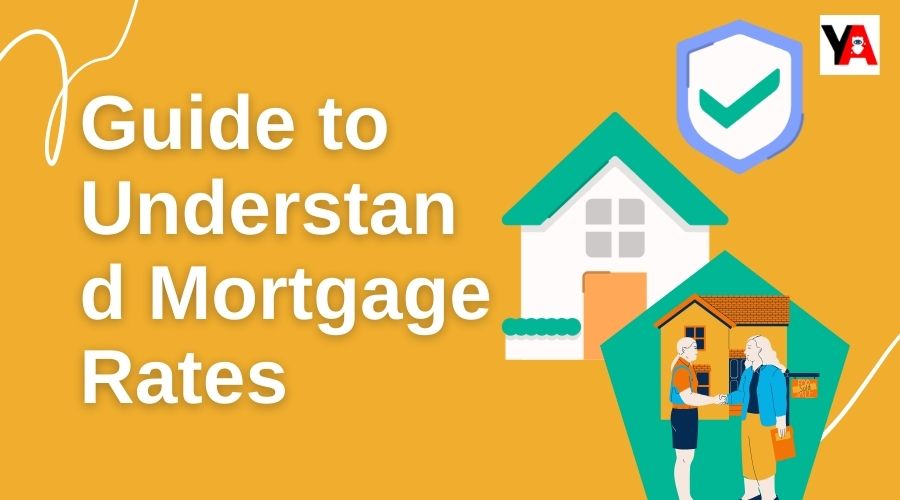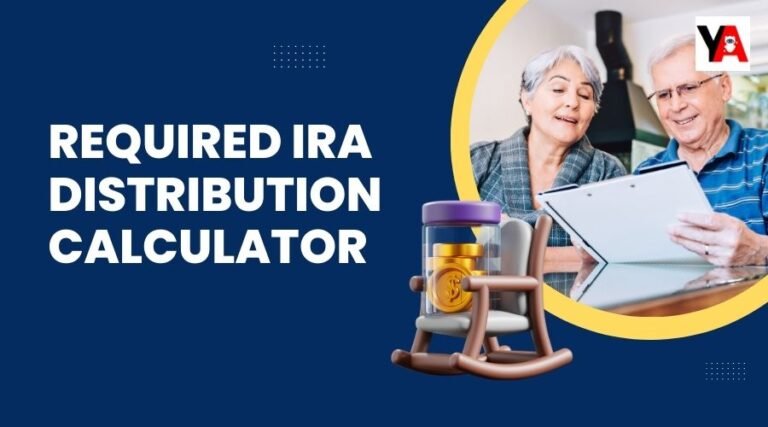In the complex world of homeownership, navigating the sea of mortgage rates is a crucial aspect of securing your dream home. As we step into 2024, understand mortgage rates becomes increasingly important.
This comprehensive guide aims to demystify the intricacies of mortgage rates, shedding light on what they are, how they differ from APR, the various types, and the factors influencing them.
Additionally, we’ll explore the quest for a “good” mortgage rate, strategies to secure a lower rate, and essential insights into interest calculations. By the end of this journey, you’ll be equipped with the knowledge needed to make informed decisions in the ever-evolving landscape of mortgage rates.
Table of Contents
ToggleWhat is a Mortgage Rate?
At its essence, a mortgage rate is the interest rate charged by lenders for borrowing funds to purchase a home. It is expressed as a percentage and plays a pivotal role in determining the overall cost of homeownership.
The mortgage rate influences your monthly mortgage payments, directly impacting your financial commitment over the life of the loan. Understand mortgage rates, this fundamental concept is crucial for anyone navigating the path to homeownership.
Difference between a mortgage rate and APR?
While mortgage rates and APR (Annual Percentage Rate) may seem interchangeable, they serve distinct purposes. The mortgage rate represents the cost of borrowing, including interest and any additional fees.
In contrast, APR provides a more comprehensive picture by incorporating all associated costs, such as closing fees and points. Distinguishing between the two ensures transparency in evaluating the true cost of a mortgage.
Types of Mortgage Rates
The duration for loan repayment, the specific mortgage type, and the term of the loan all play pivotal roles in determining your monthly interest rate. Mortgage loans can be broadly categorized into two main types:

1. Fixed-rate Mortgage:
A fixed-rate mortgage ensures a consistent interest rate for the entire duration of your loan. Consequently, your monthly principal and interest (P&I) payments remain steady throughout the life of the mortgage.
Although a fixed-rate mortgage typically comes with a higher initial interest rate compared to the introductory rate of an Adjustable-rate Mortgage (ARM), the stability it provides can be advantageous for those seeking predictability in their monthly payments.
2. Adjustable-rate Mortgage (ARM):
An adjustable-rate mortgage features an initially fixed interest rate that remains unchanged for a specified period, commonly 5 or 7 years, after which it may fluctuate periodically.
Post the introductory period, there is a possibility of a significant increase in your monthly P&I payment due to adjustments in the interest rate. However, to mitigate potential fluctuations, rate caps are in place to limit the extent to which your interest rate can rise.
Understanding the distinctions between these two primary mortgage types empowers borrowers to make informed decisions based on their financial goals and risk tolerance. The fixed-rate mortgage offers stability but at a potentially higher initial cost, while the adjustable-rate mortgage provides an initial period of lower rates but introduces an element of uncertainty after the introductory term. Choosing the right mortgage type involves a careful consideration of your financial situation and preferences, ensuring that your selected loan aligns with your long-term homeownership objectives.
Factors Affect My Mortgage Rate
Securing a mortgage is a pivotal step in the journey toward homeownership, and understanding the factors that influence your mortgage rate is crucial for making informed financial decisions. Below are ten key factors that can significantly impact your mortgage rate, shedding light on what borrowers need to consider as they navigate the complex landscape of home financing.
1. Credit Score: The Financial Gatekeeper
Your credit score stands as one of the most influential factors in determining your mortgage rate. Lenders use this three-digit number to gauge your creditworthiness, and a higher credit score often translates to a lower interest rate. Regularly monitoring and improving your credit score can yield substantial benefits when it comes to securing a favorable mortgage rate.
2. Down Payment: A Financial Show of Strength
The amount of money you can put down as a down payment plays a crucial role in shaping your mortgage rate. A larger down payment signals financial stability to lenders, potentially resulting in a lower interest rate. Aim for a substantial down payment to not only enhance your chances of loan approval but also to secure more favorable loan terms.
3. Loan-to-Value Ratio: Balancing Risk and Reward
The loan sum is divided by the property’s appraised value to get the Loan-to-Value (LTV) ratio. A lower LTV ratio implies a lower risk for the lender, often leading to a more favorable mortgage rate. Keeping this ratio in check is essential for those seeking to secure a competitive interest rate on their home loan.
4. Loan Term: Short-Term vs. Long-Term Impact
The duration of your mortgage, known as the loan term, can significantly impact your mortgage rate. Generally, shorter loan terms come with lower interest rates, but they also result in higher monthly payments. Choosing the right loan term involves striking a balance between an affordable monthly payment and minimizing the total interest paid over the life of the loan.
5. Type of Loan: Tailoring to Your Needs
The type of mortgage you choose—be it fixed-rate or adjustable-rate—can influence your interest rate. Fixed-rate mortgages offer stability with a constant interest rate, while adjustable-rate mortgages (ARMs) may start with a lower rate but can fluctuate over time. Understanding the pros and cons of each type is crucial in selecting a mortgage that aligns with your financial goals.
6. Debt-to-Income Ratio: Finding the Sweet Spot
Lenders evaluate your Debt-to-Income (DTI) ratio, comparing your monthly debt payments to your gross income. Maintaining a healthy DTI ratio demonstrates financial responsibility and can positively impact your mortgage rate. Keeping your debts in check and managing your income wisely contribute to an optimal DTI ratio.
7. Employment History: Stability Matters
A stable employment history signals reliability to lenders and can influence your mortgage rate. Lenders often prefer borrowers with consistent employment, as it enhances the perception of financial stability. If possible, avoid major career changes or gaps in employment during the mortgage application process.
8. Market Conditions: Riding the Economic Waves
The broader economic landscape and prevailing market conditions play a role in determining mortgage rates. Factors such as inflation, interest rates set by the Federal Reserve, and the overall health of the economy can impact the rate you are offered. Staying informed about economic trends can provide valuable insights into potential shifts in mortgage rates.
9. Property Type and Use: Defining Risk
The type of property you intend to purchase and its intended use can affect your mortgage rate. Lenders assess the risk associated with different property types, such as single-family homes, condominiums, or investment properties. Understanding how lenders view the risk associated with your chosen property can influence the rate you’re offered.
10. Location Matters: Local Realities
The location of your property can impact your mortgage rate, with lenders considering factors like state regulations, local market conditions, and property values in the area. Being aware of the local real estate landscape and understanding how it may influence your mortgage rate is essential for borrowers.
How Do You Know if You Have a “Good” Mortgage Rate?
Determining what constitutes a “good” mortgage rate is a subjective process that depends on various factors, including prevailing market conditions and your individual financial situation.
A “good” rate is typically one that aligns with or is lower than the average rates at the time of your mortgage application. Monitoring market trends, comparing rates from different lenders, and considering your long-term financial goals are essential steps in evaluating whether the offered rate is favorable.
How to get a lower mortgage rate?
Securing a lower mortgage rate is a goal for many homebuyers, and there are strategic approaches to increase your chances of achieving this. Improving your credit score, which is a significant factor in determining your rate, is a proactive step.
Negotiating with lenders, making a larger down payment, and exploring government-backed loan programs are additional strategies to secure a lower rate. Being knowledgeable about these options empowers you to navigate the negotiation process effectively.
Final Words on Understand mortgage Rates
As we conclude our exploration of understand mortgage rates in 2024, it’s evident that informed decisions are the bedrock of successful homeownership. The intricate dance of interest rates, APR, and various mortgage types can be daunting, but with the right knowledge, you can confidently navigate this landscape. By understanding the factors influencing mortgage rates and employing strategies to secure favorable terms, you pave the way for a smoother journey towards your dream home.
Frequently Asked Questions
To lower your mortgage rate, consider improving your credit score, negotiating with lenders, and exploring government programs. Changing your existing rate may involve refinancing, while locking in your rate typically occurs during the loan application process.
Locking in your mortgage rate involves a commitment between you and the lender to fix the interest rate for a specified period. This shields you from market fluctuations, providing stability throughout the loan process.
Changing your existing mortgage rate often requires refinancing your loan. This involves taking out a new loan to pay off the existing one, with the goal of securing a lower interest rate.
The interest rate on a mortgage is the cost of borrowing, expressed as a percentage. It determines the amount of interest you’ll pay over the life of the loan and significantly influences your monthly mortgage payments.
Mortgage rates are determined by lenders based on various factors, including your credit score, down payment, loan term, and market conditions. Lenders use these factors to calculate a rate tailored to your specific financial situation.
A mortgage is calculated by considering the loan amount, interest rate, and loan term. Monthly payments are determined using a formula that incorporates these elements, providing a predictable structure for homeowners.
Share




















